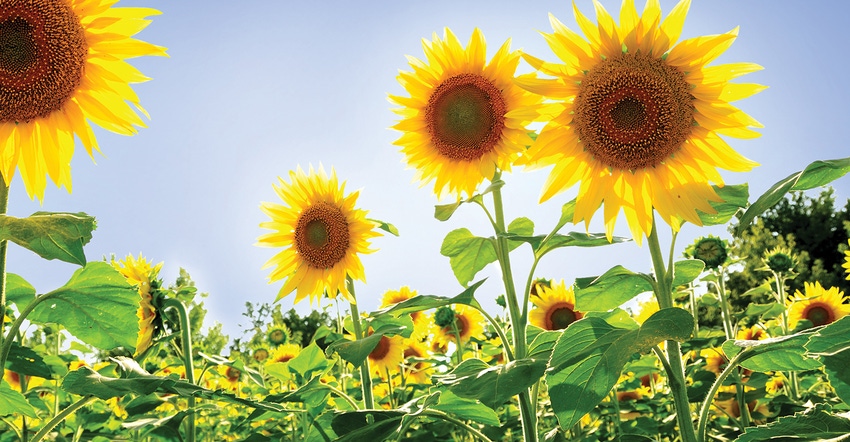
Traders are already looking ahead to 2017 sunflower planting intentions. No official estimates are out yet, but analysts believe that sunflower acres will increase given the interest they are hearing from producers.
Most commodity prices remain at depressed levels and are driving producers to look for commodities that pencil out, such as sunflowers. Reduced 2016 production, tightening seed stocks and product demand should lead the sunflower market to be aggressive to get acres in 2017.
When looking at 2017 new-crop sunflower prices and crop budgets, producers need to consider the value of oil premiums paid on oil sunflowers. Oil premiums are offered at the crush plants on oil content above 40% at a rate of a 2% price premium for each 1% of oil above 40%. For example, 45% oil content results in a 10% price premium, which pushes gross returns from oil sunflower even higher.
For soybeans, USDA is predicting the U.S. will produce the second-largest crop ever in 2017. USDA has estimated U.S. 2017 soybean acres near 85.5 million and production of over 4 billion bushels. Some private estimates for 2017 are near 89 million acres. 2016 soybean acres were 83.7 million. Weather in Argentina and Brazil was favorable as of late December. The market is expecting South America to produce another very large soybean crop in 2017. This coupled with the potentially large 2017 U.S. soybean planted acres could impact new-crop prices next fall.
In the world oil market, palm oil prices have rallied and are expected to stay firm on reduced production. This has propped up soybean oil values on the Chicago Board of Trade and is good news for sunflower. Sun oil values are closely tied to soyoil values, which could result in upward price momentum in seed prices at crush plants. The bird food market has been somewhat quiet. Warmer-than-normal temperatures with little snowpack on the U.S. East Coast, the primary market for bird food, has slowed demand. Bird food prices could rally if tougher winter conditions set in.
Looking ahead, variables that will affect the markets in addition to supply-and-demand factors will likely include strength of the U.S. dollar and uncertainty in demand from China, which could affect several commodities. The dollar has remained strong against other currencies, and expectations are that it will remain this way through 2017. The downside of a strong dollar is that it could lead to a slowdown in exports as importers, such as China, look for cheaper sources of product. CBoT traders are concerned that a slowdown in demand for soybeans will lead to difficulty in moving the record 2016 harvest.
Additionally, some market watchers predict that massive world supplies of most grains and oilseeds should mean lower, less-volatile prices in 2017, along with narrow trading ranges for many commodities. There are a lot variables floating around that can make or break prices going forward. To keep up with price movement you can go to the NSA website at sunflowernsa.com.
Sandbakken is executive director of the National Sunflower Association.
About the Author(s)
You May Also Like






